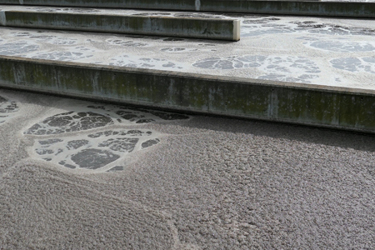How To Execute A Combined Control Strategy For Dissolved Oxygen

For wastewater treatment plants that struggle to maintain tight dissolved oxygen (DO) control due to significant changes in loading conditions throughout the day, pairing adaptive controls with multiple blowers can provide an effective and efficient solution. Enacting this type of combined control strategy for dissolved oxygen regulation, however, isn’t as simple as placing a catalog order.
Understanding the differences in technology, and the potential hurdles involved in system design, can make the process go much smoother.
An effective combined control system consists of equal parts intelligent design and innovative implementation. DO control, in particular, demands that a control system be flexible enough to acclimate to current process dynamics by analyzing past and present conditions while working to determine what’s going to be needed next. Only after a control system is tuned to process conditions can blowers be sequenced, and valves be adjusted in an effective manner which ensures process efficiency and stability.
Look for a system which qualifies the process’ response to constantly changing plant conditions and can, when necessary, coordinate a response to control multiple zones simultaneously. A proper DO control system should be capable of calculating airflow requirements for each active dissolved oxygen control zone based on process dynamics and user defined DO setpoints (demand). Once demand is determined, the system should then be capable of coordinating a blower system response capable of seamlessly producing that airflow target (supply) while conducting the valving system in such a way so as to ensure low pressure operation and proper airflow distribution.
This control strategy is a flow-based, most-open-valve method for air distribution at the lowest possible operating pressure and represents industry best practice for DO control. When properly implemented, it provides targeted DO control with appropriate system responses to changing conditions without excessive hunting and overshooting for blowers or valves while maximizing energy savings.
Be aware: Some less sophisticated systems might cycle blowers on and off without a proof-of-demand verification or create process conditions which may cause damage to the aeration system equipment.
Avoiding Pitfalls
When working with a provider to design a combined control system, the more information you can bring to the table the better. Process layout specifics and, if available historical datasets which capture system loading, DO response, and existing blower output with valve control information, are invaluable resources for system designers.
Additionally, follow the recommendations of system designers when it comes to the selection and placement of instruments to get the maximum benefit of a combined control system. Instruments which have been misapplied or improperly located can compromise the effectiveness of even the most robust and sophisticated control strategies.
In general, in each control zone there should be an analytical device, such as a DO probe; a modulating control valve, typically a butterfly valve; and an airflow meter. The DO probe allows a system to understand treatment rate and unanticipated blips to DO can provide valuable feedback regarding system loading. Modulating valves are essential for systems with multiple control zones and are typically relied upon to push airflows to aeration zones in need. Airflow meters provide a direct reading of the amount of oxygen a zone is receiving and allows for a meaningful connection to be made between oxygen supplied and the current biochemical oxygen demand (BOD) a zone is experiencing. Additionally, airflow meters provide feedback essential to determining if a zone has enough airflow for proper mixing – a particularly useful input to the control system during periods of low loading.
Some wastewater plant operators look to cut costs by asking system designers to place only one DO probe to cover multiple zones and eliminate modulating valves altogether. In that case, system responses are based on averages, but demand may be higher or lower in different zones, so there is no guarantee that airflow is being distributed correctly. Although plants are physically symmetrical, the biology of activated sludge across different zones doesn’t always behave uniformly.
Butterfly valve and actuator selection can present an additional challenge to getting the most out of a combined control system. Particularly the use of oversized butterfly valves with low resolution non-modulating duty actuators can be problematic. For optimal results, install properly sized butterfly valves or consider using a different type of valve with better control functions.
Stop Excessive Energy Drains
A combined control system can pay for itself from energy savings in a relatively short time, especially when installed in situations where aeration levels were kept high even when there was little or no demand.
For example, a wastewater plant with an oxidation ditch using pressure control to deliver airflow to several downstream processes was swapped over to a flow-based combined control system. The original pressure control system inherently maintained header pressure at all times, even though the plant had no BOD in the evening, resulting in the wasting of a substantial amount of energy while creating DO spikes. Switching over to a flow-based combined control approach minimized system pressure and allowed for tighter control on DO resulting in the operators being able to feel comfortable running at lower and even more energy efficient DO setpoints.
At commissioning, further improvements were made to the control system which allow for the blowers to enter a low energy standby/idle state during low loading periods resulting in a system upgrade that will pay for itself within the year.
A combined control approach can minimize fluctuations in DO concentrations, thereby supporting optimal and stable biological processes across a wastewater plant, while reducing energy consumption as well as wear and tear on blowers and valves. The key to successful implementation lies in choosing a system that most appropriately matches specific plant conditions and follows the best practices of experienced designers.
